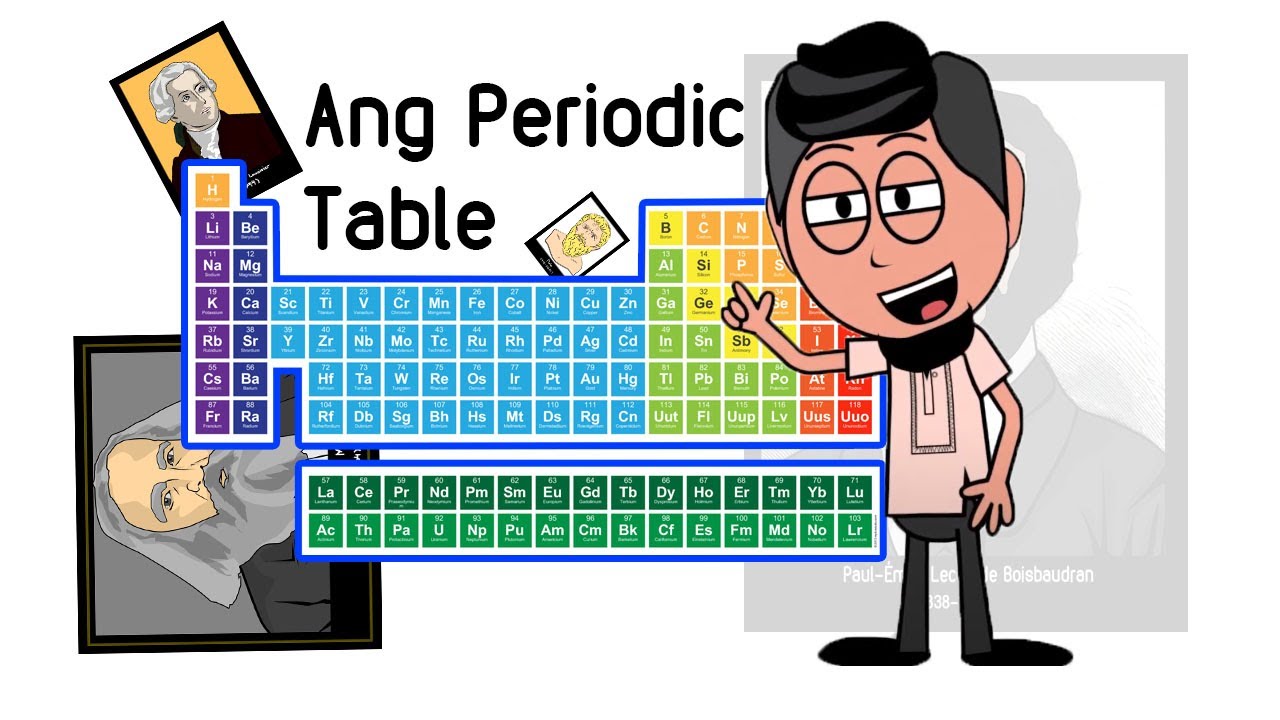Why Does the Periodic Table Look the Way It Does?
Summary
TLDRThis video explores the Periodic Table, celebrating the 150th anniversary of Mendeleev's organization. It breaks down the structure of the table, explaining how atomic number, atomic weight, protons, neutrons, and electrons define each element. The video highlights how the arrangement of elements in groups and periods reflects their chemical behaviors and electron configurations. While the current table is well-organized, some scientists suggest alternate layouts, like a circular version. The video invites viewers to think about new ways to represent elements and engage with the periodic system.
Takeaways
- 🧪 The Periodic Table celebrates its 150th anniversary in 2019, and 2019 is the International Year of the Periodic Table.
- 🔬 Each square on the Periodic Table represents an element, with the smallest unit being an atom.
- 🧲 The atomic number at the top of the square represents the number of protons in the nucleus of an atom.
- ⚛️ Protons have a positive charge, and electrons have a negative charge. In a neutral element, the number of protons equals the number of electrons.
- 🔄 Ions are formed when elements gain or lose electrons, which gives them a charge.
- ⚖️ The atomic weight at the bottom of each square is a weighted average of all the element's isotopes.
- 🧑🔬 Elements are organized by groups (columns) and periods (rows), which relate to their electron configuration and properties.
- 🟦 All elements in the same group have the same number of valence electrons, making them behave similarly.
- 📉 Rows or periods indicate how many electron rings an element has, affecting its chemical properties.
- 🔄 Some scientists propose different ways of visualizing the Periodic Table, such as using a circular arrangement for better intuitive understanding.
Q & A
What is the significance of 2019 in relation to the Periodic Table?
-2019 marks the 150th anniversary of Dmitri Mendeleev's organization of the Periodic Table. It was also designated as the International Year of the Periodic Table.
What is the smallest unit of an element, and why is it considered indivisible by chemical means?
-The smallest unit of an element is an atom. It is considered indivisible by chemical means because it cannot be broken down into anything smaller without splitting the atom, which would result in subatomic particles like protons, neutrons, and electrons.
What does the atomic number represent, and why is it important?
-The atomic number represents the number of protons in an element's nucleus. It is important because it defines the identity of the element, determining which element it is on the Periodic Table.
Why is the atomic weight not a whole number?
-The atomic weight is not a whole number because it is a weighted average of the masses of all isotopes of the element. Some isotopes are more common than others, which influences the average.
What is the relationship between protons and electrons in a neutral element?
-In a neutral element, the number of protons is equal to the number of electrons. This balance ensures that the element has no overall charge.
How do valence electrons affect an element's chemical behavior?
-Valence electrons, the outermost electrons of an atom, play a crucial role in determining how the element bonds with others, its stability, and its other chemical properties such as conductivity and boiling point.
What do the groups (columns) on the Periodic Table represent?
-The groups on the Periodic Table represent families of elements that have the same number of valence electrons, meaning they exhibit similar chemical behaviors.
What do the periods (rows) on the Periodic Table represent?
-The periods on the Periodic Table represent the number of electron shells or rings that the elements in that row have. For example, elements in the fourth period have four rings of electrons.
Why are the lanthanides and actinides separated from the main body of the Periodic Table?
-The lanthanides and actinides are separated to avoid expanding the table too much. They are squeezed into two blocks and displayed separately at the bottom to maintain a more compact design.
Why do some scientists suggest using a circular representation of the Periodic Table?
-Some scientists suggest using a circular representation because it can provide a more intuitive way to visualize the repetitive nature of the elements' properties, focusing on the relationships between elements in groups and periods.
Outlines

This section is available to paid users only. Please upgrade to access this part.
Upgrade NowMindmap

This section is available to paid users only. Please upgrade to access this part.
Upgrade NowKeywords

This section is available to paid users only. Please upgrade to access this part.
Upgrade NowHighlights

This section is available to paid users only. Please upgrade to access this part.
Upgrade NowTranscripts

This section is available to paid users only. Please upgrade to access this part.
Upgrade Now5.0 / 5 (0 votes)





